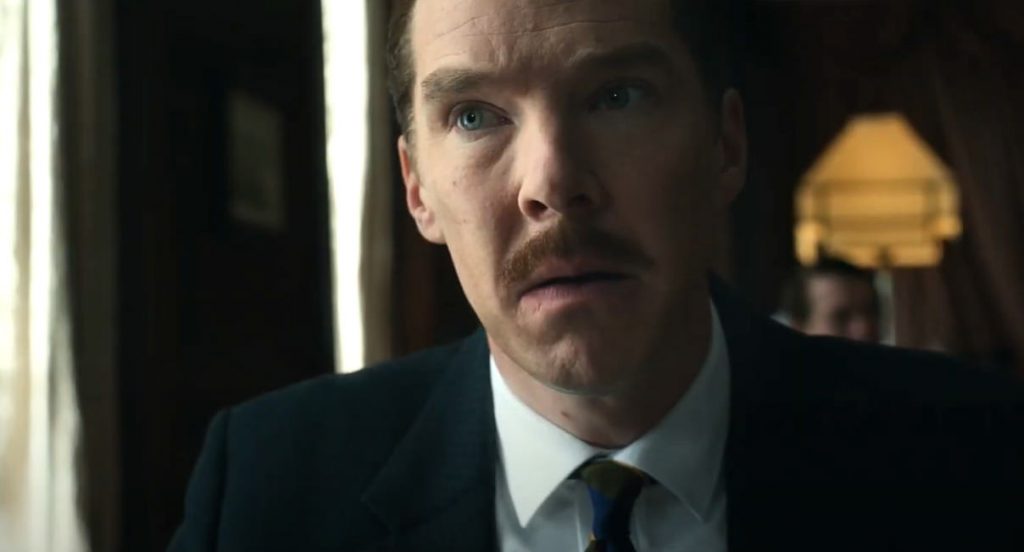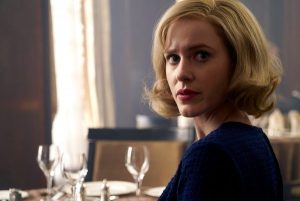“The Courier” Movie Panel: Bringing History To Screen

The International Spy Museum in Washington, DC recently hosted a virtual panel spotlighting The Courier, a Cold War spy movie starring Benedict Cumberbatch and Rachel Brosnahan.
The Courier, currently out in theaters, is a historical spy movie that stars Benedict Cumberbatch and Rachel Brosnahan. The movie is set at the height of the Cold War and focuses on a British businessman, Greville Wynne (Cumberbatch), who is recruited in a joint effort by MI6 and the CIA to go into Russia and make contact with a Soviet asset. A friendship soon blossoms between Wynne and the asset, Oleg Penkovsky (Merab Ninidze) as Wynne begins transporting Soviet Intelligence back into London through numerous trips. Thousands of pieces of intelligence were delivered between the two and their efforts helped to inform decision making during the Cuban Missile Crisis.
The International Spy Museum, located in Washington, DC, recently hosted a panel to discuss the making of The Courier and the historical accuracy of the adaptation. Director Dominic Cooke explained that he was drawn to the story due to the fact it was compelling, not widely known, and showed the personal cost of espionage. He went on to explain that he took great effort into accurately depict the setting on the early 1960s by thorough research and studying other movies of the time.
When filming, he chose to represent the time period with a limited color palette and regimented backgrounds in representing both London and Moscow. Later on, Cooke explained that the production wasn’t allowed to actually film in Moscow, as Penkovsky is still seen as a traitor in Russia. The production ended up being split between London and Prague. Cooke also suggested that casting historical films are more challenging because the actors are required to tap into emotions from a time that they weren’t present for.
After this brief discussion, historian and museum curator Andrew Hammond showed off photos of artifacts that Wynne and Penkovsky used during their alliance, including a small camera that took up to fifty photographs at a time and a lead box used to safely transfer cassettes. Former CIA Chief of Disguise, Jonna Mendez, active in the CIA at the time of this operation, spoke to the difficult experience of agents operating in Moscow during the Cold War. She declared that “Moscow was a city of surveillance,” during that time and that the alliance with MI6 during this operation accelerated the CIA’s development of numerous spy innovations and increased training for agents.
Cooke then detailed the process of adapting and filming the prison scenes of The Courier after Wynne and Penkovsky were eventually captured by the Soviet Union. Cooke explained that the scene between the two men in the film was fictionalized, but Wynne and Penkovsky were able to see each other at the real-life trial. In terms of filming the scenes, Cumberbatch lost a lot of weight for the scenes and Cooke noted that he seemed traumatized by it while filming. In addition, Cumberbatch wanted his head to be shaved on camera for real and wanted to actually be brought into the interrogation room blindfolded for his scene with Penkovsky.
Addressing the other inaccuracies of The Courier, Cooke explained he wanted the adaptation to honor the spirit of the story, even if they had condensed much of the story to fit into the time frame of a feature-length film. Brosnahan’s character was a stand in for the two male CIA agents that took part in the operation and a comment was made that even today women struggle getting into field work at the CIA. Cooke explained that Brosnahan’s character was also a tribute to a woman that was involved with the operation, Janet Chisholm. Chisholm was the wife of an MI6 agent who assisted with the operation. The Chisholms’ covers were eventually blown and the two were deported from Russia.

In addition, there were a lot of aspects of the story that were not known for sure. There is no definitive proof as to how the KGB found out about the operation and the Soviets put out a lot of false information about the case to cover up how much of an embarrassment the operation was for Soviet Intelligence. In addition, Wynne published a couple of books after the ordeal that experts say were riddled with falsehoods. Cooke explained that the only things in Wynne’s books that he thought were truly accurate was his experience in prison and his deep admiration for Penkovsky. Cooke admitted there were many ways to adapt this story but wanted the relationship between Wynne and Penkovsky to be the center of the movie.
The panel provided an interesting look into the impact of the real-life operation and the challenges of adapting history for the screen. While there are many accuracies in movies based on true stories, there are also changes made in order fit the story into a structure of a movie. Though historical inaccuracies in movies can sometimes damage and distort perceptions of history, The Courier succeeds in honoring the spirit of its story despite its own inaccuracies.
–
Having garnered favorable critic and audience scores, The Courier got a US theatrical release on March 19, 2021. It was made available on digital on April 16, 2021.
Author: Jessica Wolff
Jessica Wolff is a graduate of Drexel University with a BS in Film/Video. She has a passion for entertainment and representation in entertainment. She currently resides outside of Washington, DC.
Help support independent journalism. Subscribe to our Patreon.
Copyright © The Geekiary
Do not copy our content in whole to other websites. If you are reading this anywhere besides TheGeekiary.com, it has been stolen.Read our
